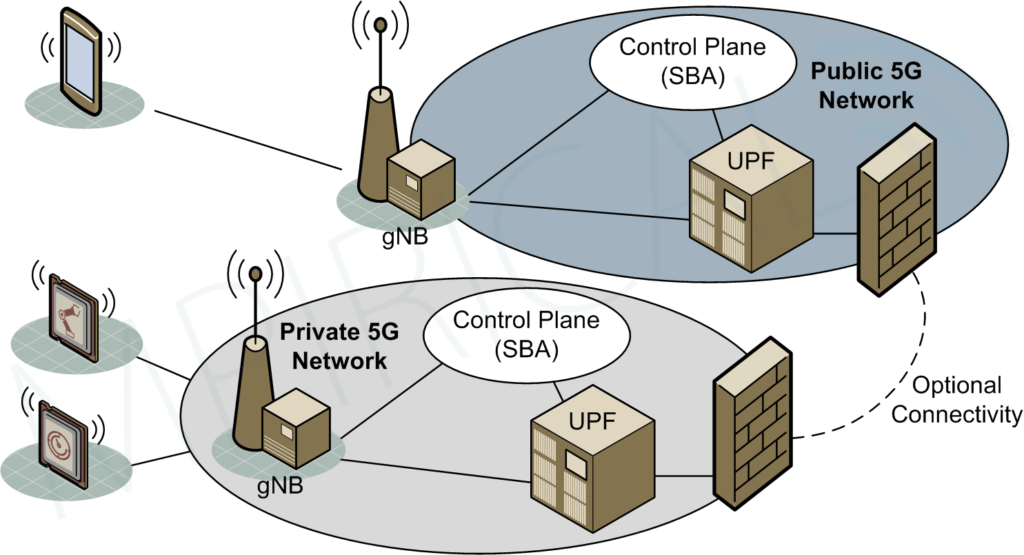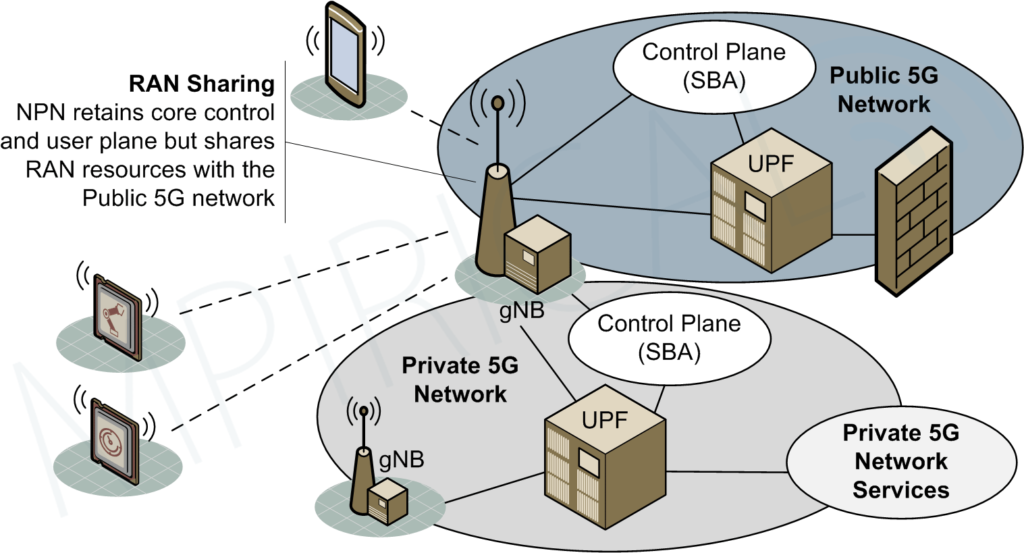
Private 5G Networks
Private 5G networks are a topical area at the moment, no doubt fuelled by the successes of LTE in private network deployments.
This is particularly relevant to the U.S.A., where Private LTE has been deployed within the 3.5GHz CBRS (Citizen’s Broadband Radio Service) shared band. It’s clear though that Private 5G is shaping up to see significant deployments on a global scale, pending spectrum regulation.
Advantages
5G as a private networking technology is a particularly interesting proposition; with data rates in the order of Gbps, latency of sub 1ms and reliability exceeding 99.999%, the latest 3GPP technology outperforms LTE and Wi-Fi but also provides advantages beyond simple performance.
For example, connection density of devices has improved tenfold over LTE, making 5G attractive for Massive IoT deployments and therefore ideal for private deployments in a variety of scenarios with high numbers of end devices – enterprise, industry, healthcare, etc. Moreover, 5G has inherent support for Network Slicing, making network management and control easier for the private network operator. Support for MEC (Multi Access Edge Computing) is also beneficial, particularly in an industrial setting where AR and VR use cases are gaining traction.
Finally, the QoS mechanisms that 5G supports, albeit similar to LTE, now extend to delay critical services which require guaranteed bitrates (a prime requirement for industrial applications requiring deterministic message transfer).

Challenges
Beyond the media hype surrounding 5G however, deploying the technology in a private network setting is not without its challenges. The technology is new, which obviously has implications on cost. Where early Private 5G trials are enabled with the financial support of equipment vendors, mobile service providers and academia, the price point for 5G will need to come down if Private 5G is to become a commercial success. That said, as 5G technology as a whole sees more widespread deployment (approx. 51 5G networks currently deployed at the time of writing), the cost should reduce.
Perhaps one of the most significant challenges is spectrum or more specifically, in which band should Private 5G be deployed. At present, there’s three options available: Licensed, Unlicensed and Shared.

Licensed – although operating the Private 5G network within a licensed spectrum band will mitigate the risk of interference, the cost associated with this option is potentially too great. This however is scenario dependent; for an enterprise deployment of Private 5G, it’s unrealistic to think that that enterprise would be in a position to purchase exclusive access to radio spectrum. However, for a national infrastructure company it may be an option.
Interestingly, spectrum regulators tend to understand these issues and consequently, some common-sense approaches to licensed spectrum usage are beginning to emerge. For example, the UK regulator OFCOM is permitting access to licensed spectrum owned by mobile service providers which may be either a) unused or b) not deployed in a specific geographical area. For a small fee and under strict regulation (transmission range, geography, etc), a Private 5G network could potentially access this spectrum.
Note that the mining industry in particular could benefit from this approach since mines deep underground or geographically isolated are not going to interfere with public mobile networks.
Unlicensed – with this approach, the Private 5G network will operate in the traditional unlicensed band which is shared by other technologies such as Wi-Fi and LTE-U. Interference is obviously an issue, but the cost of the spectrum is free. In addition, in the USA, Europe and other parts of the world, freeing up a further 1.2GHz of spectrum around 6GHz is being explored.
Shared – around the globe today, spectrum regulators are assigning spectrum bands allocated to shared spectrum operation and reserved for a particular technology such as LTE or 5G. For a typically low fee, a Private 5G network can be deployed within this shared spectrum band, benefitting from a reduced risk of interference and potentially large channel sizes (OFCOM’s Shared Access License reserves 4 separate bands with the 24.25-26.5GHz band having 2.25GHz of spectrum available). Interference is still however an issue and as such, coordination between private networks may be required.
Deployment Models
From the perspective of the 3GPP (the standards body responsible for 5G New Radio), Private 5G networks are termed “Non Public Networks”. Two high level deployment models exist:
SNPN (Standalone NPN) – this is a Private 5G network which is self-contained; the network owner is responsible for the RAN and Core elements, with no interaction with a Mobile Service Provider.

Standalone Non Public Network
Public Network Integrated NPN – with this approach, a Mobile Service Provider will assist in the deployment of the Private 5G network. This could include RAN sharing, RAN and Core Sharing or full outsourcing, possibly instantiated as a network slice within the Public 5G network.

Public Network Integrated Non Public Network (RAN Sharing Example)
Conclusion
On a global basis, even Private LTE networks are a relatively new phenomenon, with deployment lessons still being learned. Although real-life deployments of Private 5G are out there, challenges related to cost and spectrum usage, coupled with a lack of knowledge within the private network industry are potentially going to be limiting factors. However, specific use cases such as Industry 4.0 could unlock a huge market for Private 5G, particularly since 5G can provide communication services which outperform the private networking technologies that are currently available today. Providing a combined approach between standardization bodies, spectrum regulators and equipment manufacturers can be achieved, Private 5G could mean the reach of 5G is extended way beyond the traditional mobile space.
Want to know more about 5G? Take a look at our 5G training courses here.
